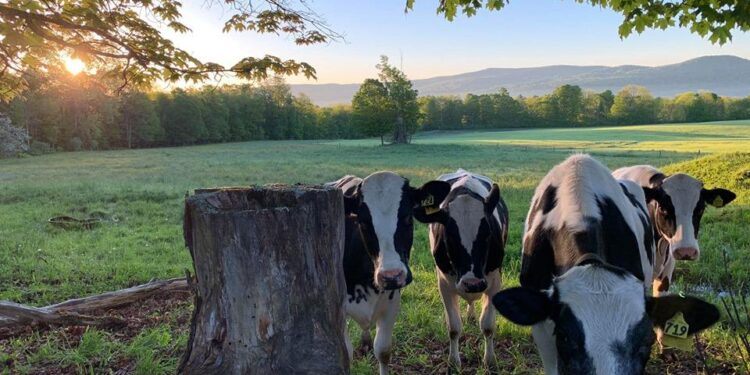In the rolling hills and fertile valleys of Vermont, a quiet revolution is underway. Traditional farming practices that have shaped the state’s agricultural landscape for generations are meeting the pulse of modern innovation. Farmers across Vermont are embracing new technologies that promise to reshape how crops are grown, livestock are managed, and sustainability goals are pursued. As these advancements take root, they signal a transformative chapter for an industry deeply woven into the state’s identity-a story unfolding now on News Channel 3-12.
Emerging Technologies Transform Farming Practices Across Vermont
Across the lush landscapes of Vermont, farmers are embracing an array of innovative tools that are reshaping traditional agricultural methods. From precision GPS-guided tractors that optimize every inch of the field to sophisticated drone technology monitoring crop health from above, these advancements are ushering in a new era of efficiency and sustainability. Many local farms now incorporate smart sensors that provide real-time soil moisture and nutrient data, allowing growers to fine-tune irrigation and fertilization with unmatched accuracy. This fusion of technology and time-honored practices is helping Vermont farms reduce waste, increase yields, and adapt swiftly to changing climate conditions.
Key technologies making an impact include:
- Autonomous machinery reducing labor demands
- AI-driven analytics predicting optimal planting schedules
- IoT devices enabling remote monitoring of livestock health
- Renewable energy solutions cutting operational costs
| Technology | Benefit | Example |
|---|---|---|
| Drone Surveillance | Detects pest infestations early | Vermont Hills Farm |
| Smart Irrigation | Reduces water usage by 30% | Green Valley Orchards |
| Autonomous Tractors | Saves 20% in labor hours | Maple Leaf Dairy |
Adapting to Innovation Challenges and Opportunities for Local Farmers
Local farmers in Vermont have embraced cutting-edge technology as both a challenge and an opportunity to transform traditional practices. The integration of precision agriculture tools, such as drones and soil sensors, has revolutionized the way crops are monitored and managed. These advancements allow farmers to optimize resource use, reduce waste, and increase yields, but they also require substantial investments and technical know-how, creating a steep learning curve for many in the community. As a result, collaboration and knowledge-sharing have become crucial as farmers strive to adapt and remain competitive in an evolving industry.
Among the innovations adopted, several key technologies stand out for their impact:
- Automated irrigation systems that conserve water and improve efficiency.
- Data analytics platforms offering real-time insights on crop health and weather patterns.
- Robotic harvesters easing labor shortages and expediting harvests.
| Technology | Benefit | Challenge |
|---|---|---|
| Drones | Precise crop monitoring | Cost of equipment |
| Soil Sensors | Optimized nutrient application | Technical expertise required |
| Robotic Harvesters | Labor efficiency | High initial investment |
Strategies for Integrating New Tools to Boost Sustainability and Efficiency
Adopting new technologies on Vermont farms requires a well-thought-out approach that balances innovation with tradition. Farmers are successfully implementing a combination of incremental changes and targeted investments by prioritizing tools that offer clear, measurable benefits. Key strategies include:
- Trial periods: Testing new equipment or software on a smaller scale before full deployment to mitigate risks.
- Collaborative learning: Sharing insights and results within local farming communities to accelerate collective expertise.
- Customized integration: Tailoring technologies to complement specific crop types, soil conditions, and weather patterns unique to Vermont’s landscape.
Efficiency gains and sustainability go hand-in-hand when farmers utilize data-driven tools alongside traditional knowledge. Below is a simplified comparison of common practices, illustrating the move toward more sustainable agriculture:
| Practice | Traditional Method | Modern Technology | Benefit |
|---|---|---|---|
| Soil Monitoring | Manual sampling | Sensor networks | Real-time data, reduced waste |
| Irrigation | Scheduled watering | Smart irrigation systems | Water conservation, improved yield |
| Crop Health | Visual inspection | Drones & AI analysis | Early pest detection, targeted treatment |
Concluding Remarks
As Vermont’s farmers continue to embrace cutting-edge technology, the state’s agricultural landscape is quietly transforming-a blend of tradition and innovation shaping a new chapter in farming. While challenges remain, these advancements offer a promising path forward, ensuring that Vermont’s fields remain fertile ground for growth, sustainability, and community resilience. In this evolving story, one thing is clear: the future of Vermont agriculture is being written one smart innovation at a time.































